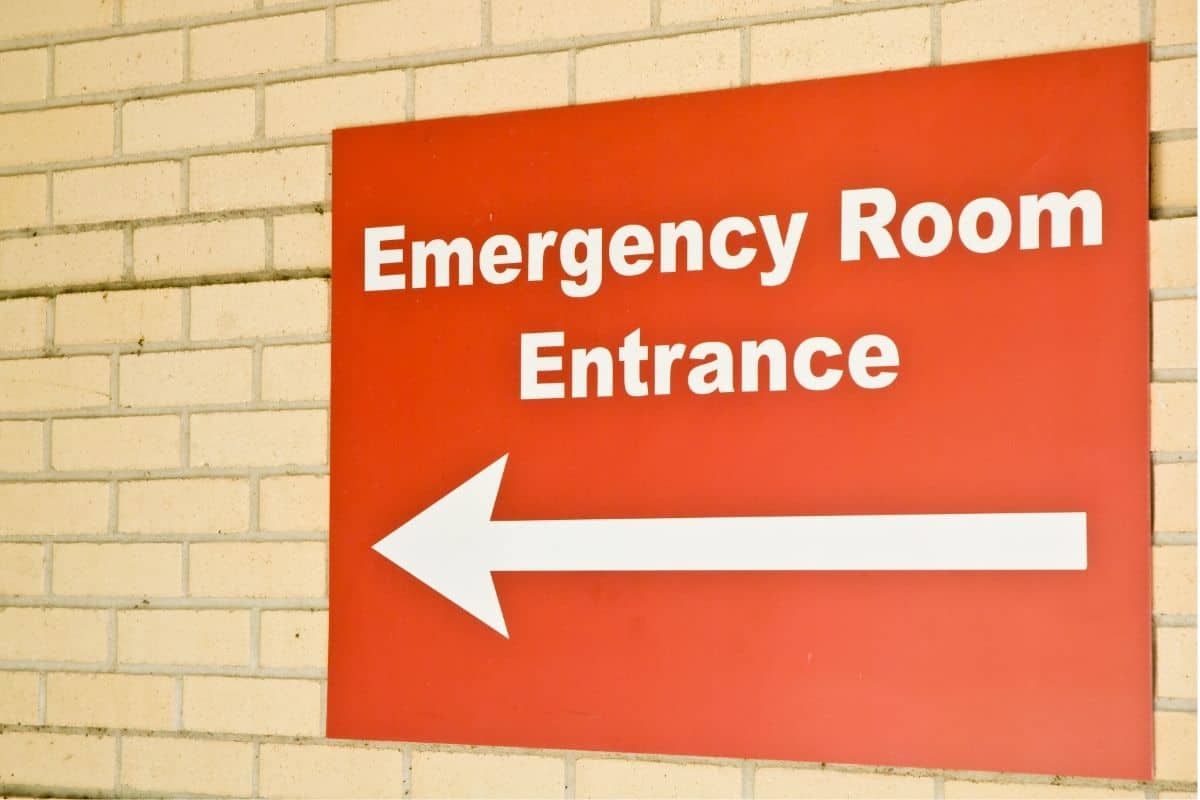Does Medicare Cover Emergency Room Visits?
In this day and age, it feels like you cannot do anything without having to pay a costly fee. Unfortunately, this often includes medical care.
We can’t always – in fact, we rarely – know when an accident is going to happen. Tragedy can strike at any moment, and during these moments, the last thing we want to think about is how much the cost will be.
Thankfully, you will be happy to learn that Medicare covers ER visits across the United States and its regions!
Medicare Part B covers the majority of outpatient emergency department services, whereas Medicare Part A covers inpatient hospital stays. Additionally, ER visits are covered by Medicare Advantage plans (Part C).
In this article, we will take a closer look at each of the relevant Medicare plans, and how they cover each component of the emergency room experience.
So, let’s get into it.
Table of contents
How Much Does A Visit To The Emergency Room Typically Cost?

The overall cost of an ER visit is determined by the type of unit you visit, whether or not you have additional insurance (e.g., a Medicare supplement plan or a Medicare Advantage plan (Part C)) as well as other considerations.
A copay is usually charged by Medicare for each emergency department visit, as well as co-pays for hospital services received during the visit. On top of these co-pays, you will be charged a coinsurance for ER doctor services.
For doctor services, Medicare Part B normally covers 80% of the Medicare-approved rate, with the remaining 20% being your responsibility. The deductible for Part B is also applicable.
Below, we will go over each of these alternatives in greater detail.
Original Medicare Costs And Emergency Room Visits
Original Medicare is divided into two components:
- Medicare Part A
- Medicare Part B.
Outpatient services are covered by Medicare Part B, while inpatient hospital stays are covered by Medicare Part A.
Your hospital status (e.g., whether you’ve been officially admitted to a hospital) will have an impact on how much you pay for emergency care, and whether Original Medicare benefits apply.
You are deemed an outpatient when you arrive at a hospital’s emergency department via ambulance, or you visit the waiting room. Even if you spend the night in the hospital, you may be classified an outpatient.
Medicare Part B Outpatient Emergency Department Costs
Medicare Part B covers all outpatient emergency department visits, with you typically paying 20% of the Medicare-approved cost for doctor and other health-care provider treatments and procedures.
In most cases, the hospital will charge you a co-payment for each Medicare-covered treatment you get, such as X-rays or lab testing.
Co-pays are usually limited to the $1,556 Part A deductible per service. The Part B deductible ($233 in 2022) also remains, although you might not have to pay it if you have fully reached your yearly deductible before going to the hospital.
Medicare Part A Inpatient Hospital Costs
Only after a doctor issues an order and formally admits you to the hospital will Medicare provide hospital inpatient coverage. Inpatient admission is usually required when you will require at least two nights of medically necessary hospital treatment.
Medicare Part A covers your whole stay in the hospital once you are admitted. Your visit will then be treated as an inpatient stay, thus no ER co-pays will apply.
Your Part A deductible of $1,556 applies to each benefit period, and you will owe no co-insurance for the first two months (60 days) in hospital.
The hospital where ER services were provided must be used for admission. Even if it’s for the same illness, being admitted to a different facility within three days is considered a separate incident.
Medicare Advantage (Part C) Fees for Emergency Rooms
An alternative to using Original Medicare is using Medicare Advantage (Part C), which offers the same features. Emergency room visits are covered by Advantage plans, although the regulations of eligibility and out-of-pocket charges vary from those of standard Medicare.
Private insurance companies administer these plans, which frequently combine Medicare Part A and Part B benefits with Part D prescription medication cover.
Medicare Advantage enables emergency room visits anywhere in the United States, and you’re not obligated to attend in-network hospitals. Each Medicare Advantage plan determines its own ER visit fees, however, which may vary from those of Original Medicare.
Whether a person uses an in-network or out-of-network provider with Medicare Advantage, they will normally pay the lesser of the in-network rate or a $50 fee for emergency care.
Nonetheless, we urge that you investigate their plans for specific coverage and pricing.
Medigap Expenses For Emergency Rooms
Another option is to use Medigap, which is a Medicare insurance supplement that is only accessible to persons who are registered in Original Medicare.
Note: Medigap is not obtainable to those who have a Medicare Advantage plan instead.
Medigap covers some of the costs not covered by Medicare Parts A and B, such as emergency department visits.
Additionally, many Medigap plans fund emergency room visits in other countries, making this field of insurance more comprehensive than original Medicare and Medicare Advantage.
Although, it’s worth noting that emergency care must commence during the first 60 days of a person’s stay to qualify for this coverage.
A $250 yearly deductible and 20% of invoiced charges for medically essential emergency care are included in out-of-pocket expenses in 2021, with a lifetime limit of $50,000.
This benefit is available in the C, D, F, G, M, and N Medigap plans. Despite the fact that plans E, H, I, and J are no longer available to buy, anyone who possesses one of these plans remains covered for international emergency care.
Final Thoughts
To answer the titular question: yes, Medicare does cover visits to the emergency room, and there are plenty of options for you to look into.
We strongly recommend that you do your own research into your medical plans, and work out how each plan can work for you personally.
We hope you found this article useful and informative.
Frequently Asked Questions
You’ll be charged afterwards, whether you can pay or not. The Emergency Medical Treatment and Labor Act (EMTALA), a federal law passed in 1986, requires anyone coming to a hospital emergency room to be stabilized and treated, regardless of their insurance status or ability to pay.
ER visits can cost upwards of over $1,000 a visit, with an average visit costing between $1,200 and $1,300. The cost of care shouldn’t be the only consideration. Time is important, too. The average wait time at an emergency room is four hours.
